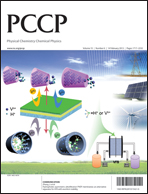Highly efficient hybrid thin-film solar cells using a solution-processed hole-blocking layer†
Abstract
We report the origin of the improvement of the power conversion efficiency (PCE) of hybrid thin-film solar cells when a soluble C60 derivative, [6,6]-phenyl-C61-butyric acid methyl ester (PCBM), is introduced as a hole-blocking layer. The PCBM layer could establish better interfacial contact by decreasing the reverse dark-saturation current density, resulting in a decrease in the probability of carrier recombination. The PCE of this optimized device reached a maximum value of 8.34% and is the highest yet reported for hybrid thin-film solar cells.


 Please wait while we load your content...
Please wait while we load your content...